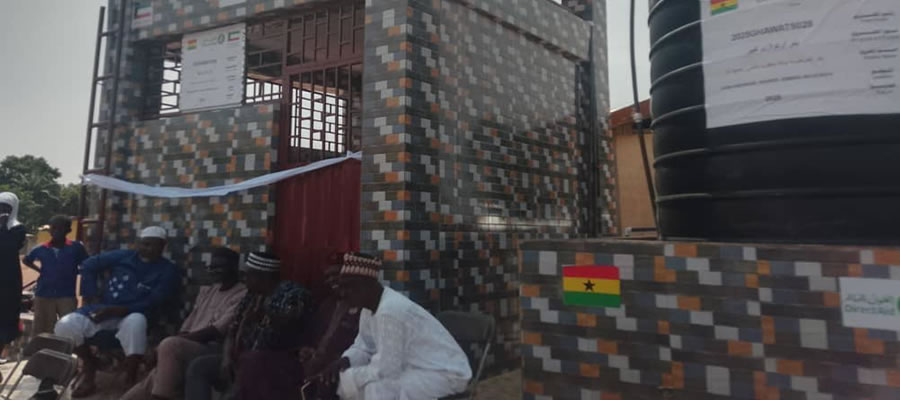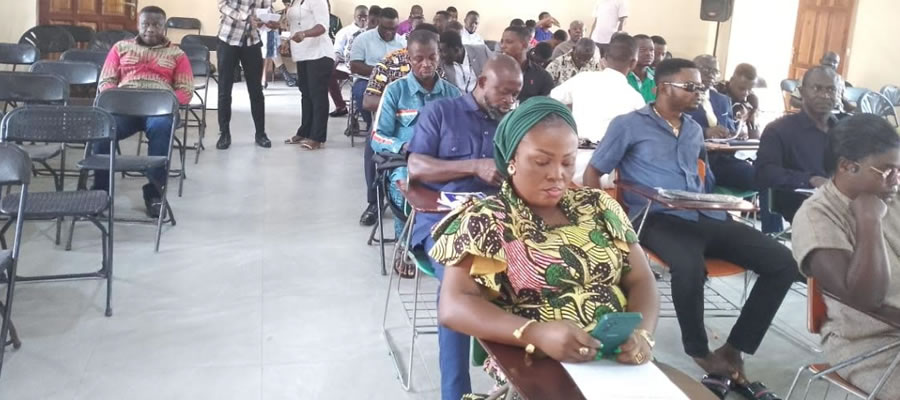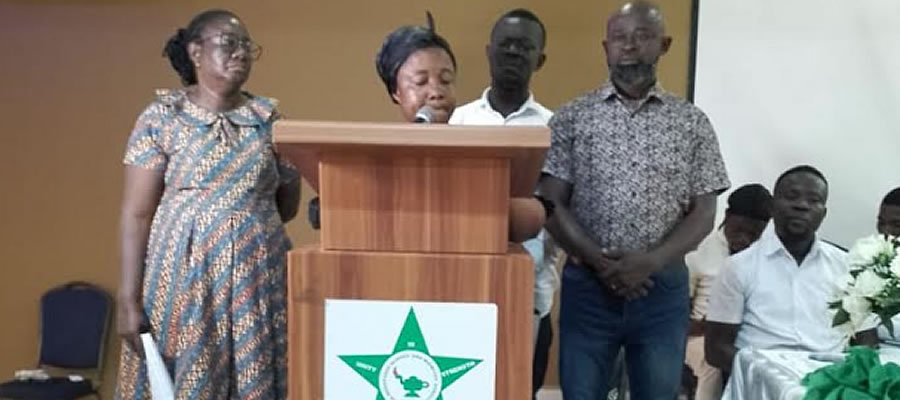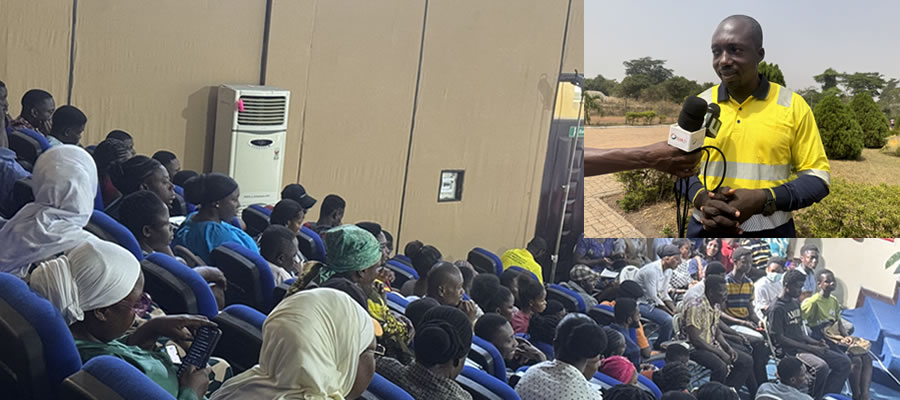

Access and quality education should be the pivot of any successful educational plan. That is why when efforts are made to reform and redirect educational activities, the goal that becomes paramount is access to quality education. The Directorate seeks to provide increased, access and quality educational opportunities to all school going age children in the district in the next four years and beyond.
The Ejisu-Juaben Municipal Directorate of Education exists to improve the quality of education through effective teaching and learning and to promote Science, Technology and Mathematics education as well as ensuring relevant Vocational/Technical education and training for employability. The ESP is developed around the following indicative targets or performance indicators.
• Enrollment drive and retention through sensitization
• Provision of school infrastructure and facilities (Potable water, electricity, road rumples etc. (where applicable)
• Staffing of schools (particularly those in remote areas)
• Motivation of education staff to promote educational standards
• Eradication of environmental hazards in schools (public toilet and refuse dumps)
• To discourage child labour and streetism in the district
• Provision of well equipped library and recreational centres for children
• Educational programme on prevention and management of HIV/AIDS
• Priority to be given to girls education
• Provision of teaching and learning materials (TLMs)
• Addressing the problems of textbooks and other logistics supply
• Develop Science, Technology and Technical/Vocational Education and Training
• Involve community participation in the development of Education in the district (PTA, SMC, etc.)
According to educational survey conducted in 2005, there are 122 Kindergarten/Nursery schools, 76 are public and 46 are private. The number has been found to be inadequate for the schools to absorb all the children in this bracket The Primary schools are 134, comprising 88 public and 46 private. These schools are manned by 558 teachers made up of 515 trained and 43 untrained. The total enrollment is 21069. The pupil teacher ratio (PTR) is 38:1. The figure is above the national ratio of 35:1.
For the Junior Secondary School (JSS) are 77 and out of this figure, 56 are public and 21 are in the private hands. The total enrollment of these schools is 8000. These schools are manned by 429 teachers with 411 trained and 18 untrained. The PTR is 19:1.In terms of Senior Secondary education, the district has six (6) schools, made up of five (5) public and one private. These schools are not able to meet the total demand of JSS products. The Municipal therefore, has to encourage communities and individuals to establish their own Second Cycle Schools especially technical and Vocational for employability.
The major areas of operation for the Directorate include:
• Equitable access to education
• Improving the quality of education
• Education planning and management
• Science, technical and vocational education and training
The major sources of finance for the activities undertaken by the Directorate are:
• Government of Ghana
• DFID
• Municipal Assembly
The major problems facing the Directorate in its operation in the Municipality are:
• Inadequate transportation facilities
• Insufficient accommodation for teachers and office staffs
• Inadequate furniture for pupils and teachers
• Inadequate toilets and urinals for schools
• Inadequate of library facilities
Some of the measures being taken by the Directorate to improve upon the educational standards include:
• Intensifying supervision and monitoring.
• Organizing workshops for teachers
• Encouraging community participation through the activities of DEPT and CPC.
The major problems hindering education the municipality are:
• Lack of transportation facilities for effective supervision and monitoring
• Lack of accommodation for teachers
• Truancy of the pupils
The relationship between the Directorate and the Ministry of Education in the improvement of educational standards in the Municipality are as follows:
• Ministry of Education formulates policies for the Directorate
• The Ministry provide logistics for the Directorate
• Effects of the Capitation Grant on education are Positive
• Increase in enrollment
• Increase in the provision of Teaching and Learning Materials
Negative Effects
• Created a pressure on teachers and other educational infrastructure due to large class sizes.
• Created conflict between parents and teachers in the provision of stationary for the pupils.
The future prospects of the Directorate is to step up the supervision and monitoring of schools which will lead to 100% passes in BECE and SSCE results. The priorities for the directorate in the improvement and development of education in the Municipality have been presented below:
The number of male children of school going age who attends school is about 50.4 percent whilst the females represent about 49.1 percent. This indicates that the various campaigns on girl child education have been quite successful in the municipality. Majority of the children who attend school in the district are in primary school constituting about 62.1 percent. Those in JSS, SSS and tertiary constitutes 28.1 percent, 7.8 percent and 2.0 percent respectively. About 32.1 percent of the children attend schools within the district whilst the other 17.9 percent attend schools outside the district.
Due to the low cost of fees and the capitation grant in public schools, most of the children attend public school constituting about 79.9 percent whilst the other 20.1 percent attend private schools. Those who attend private schools gave their reasons to be high school performance but gave the problem of high cost. The average cost of education per term is about 178,796. this indicates that despite the capitation grant parents still incur expenses on books, transportation, classes fees among others thus contributing to this amount. The average distance covered by school children to school in the district is about 2.0 km.
Literacy Level
The Municipality is privileged to have a high literacy rate which is about 72.3 percent whilst the illiteracy rate is about 27.3 percent. This can promote development in the district as majority of the people can read and understand developmental issues in simple terms. In terms of educational level about 57.3 percent of the population has got either middle school or JSS education.
The attainment of SSS, tertiary or primary education constitutes about 12.7 percent, 8.3 percent and 11 percent respectively. It is only about 9.7 percent of the population that have never attended school before. Even though the number of people who have attained tertiary education is very low, the number of people who have got secondary education (senior and junior) and middle school education are quite high thus contributing to the high literacy rate in the district.
From the survey conducted reasons like quality education, proximity and congestion in public schools constituting 90.5%, 8.1% and 1.4% respectively are some of the motive behind parents preferring private schools to public schools. With regards to this however, quality education is basically the reason why many people in the district would like their children to patronize private school. This is because about 90.5% of respondents claim to educate their wards in private schools because of quality education given in private schools.
This therefore implies that, public education are lacking behind in terms of quality education in the district and hence the need to put in adequate measures to improve the educational standards of pubic schools.
Problems encountered in education of wards
From the survey, problems like high cost of education, long distance to school , poor school performance of wards constituting 66.2%, 7.9%, 25.9% respectively are some of the major problems confronting parents in the education of their wards The major problem faced by people in the district with regards to the education of their wards is high cost. As can be seen from the percentages above, about 66.2% of respondents face the problem of high educational cost of their wards.
Most of the parents who complained of high cost of education take their wards to private school because of the quality of learning there. This therefore implies that the improvement in the standard of education in the public schools will attract most of these parents to bring their wards to the public schools at a lower cost.
Awareness of Capitation Grant
The survey revealed that about 98% of the people in the district are aware of the capitation grant. Yet few people are patronizing public schools. This is because they claim quality education is what their wards need and not free education hence about 90.5% of the people have their wards still patronizing private schools. This implies that the effort of the government in trying to increase school participation rate in the country and for that matter this district has not gone alongside quality education and hence even though people are aware of the capitation grant they still patronize private schools instead.
Date Created : 11/27/2017 2:40:49 AM













 facebook
facebook
 twitter
twitter
 Youtube
Youtube
 +233 593 831 280
+233 593 831 280 0800 430 430
0800 430 430 GPS: GE-231-4383
GPS: GE-231-4383 info@ghanadistricts.com
info@ghanadistricts.com Box GP1044, Accra, Ghana
Box GP1044, Accra, Ghana